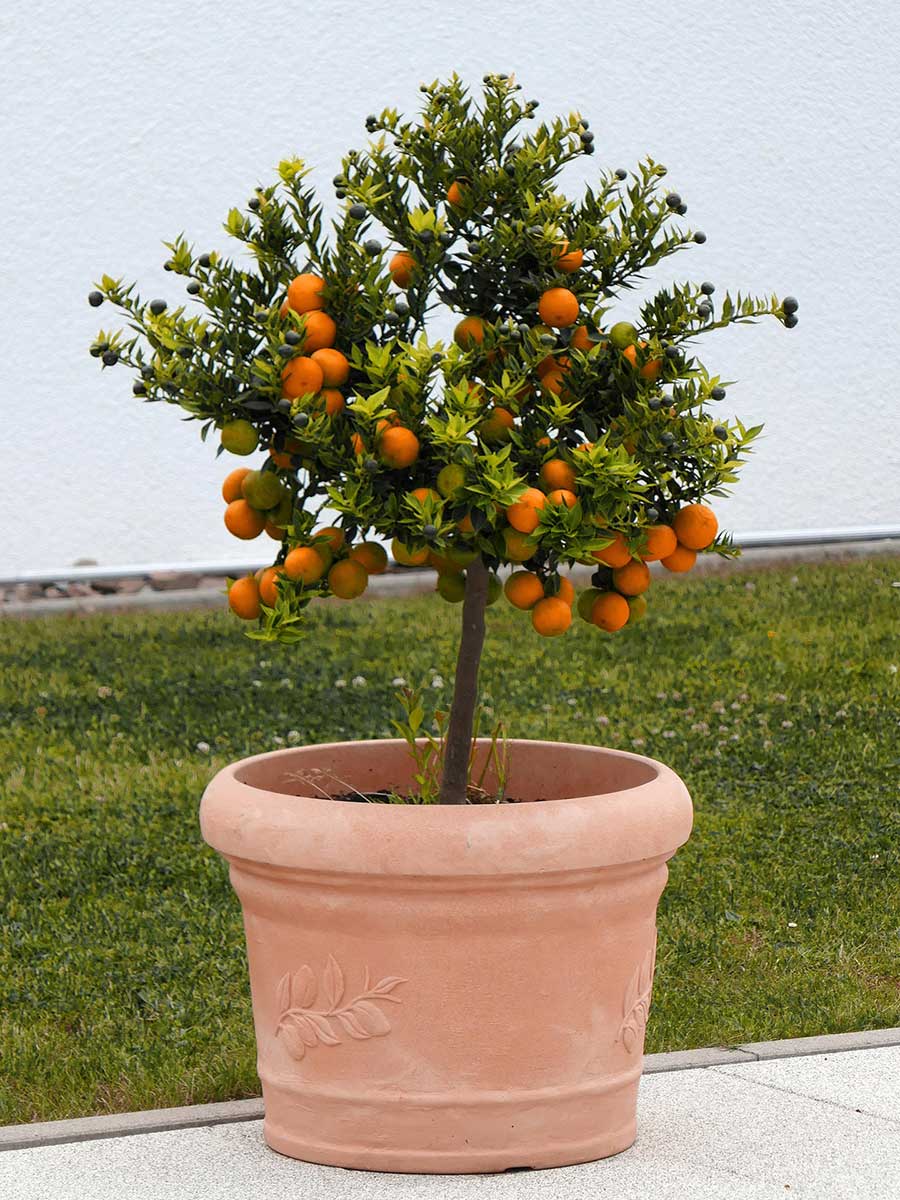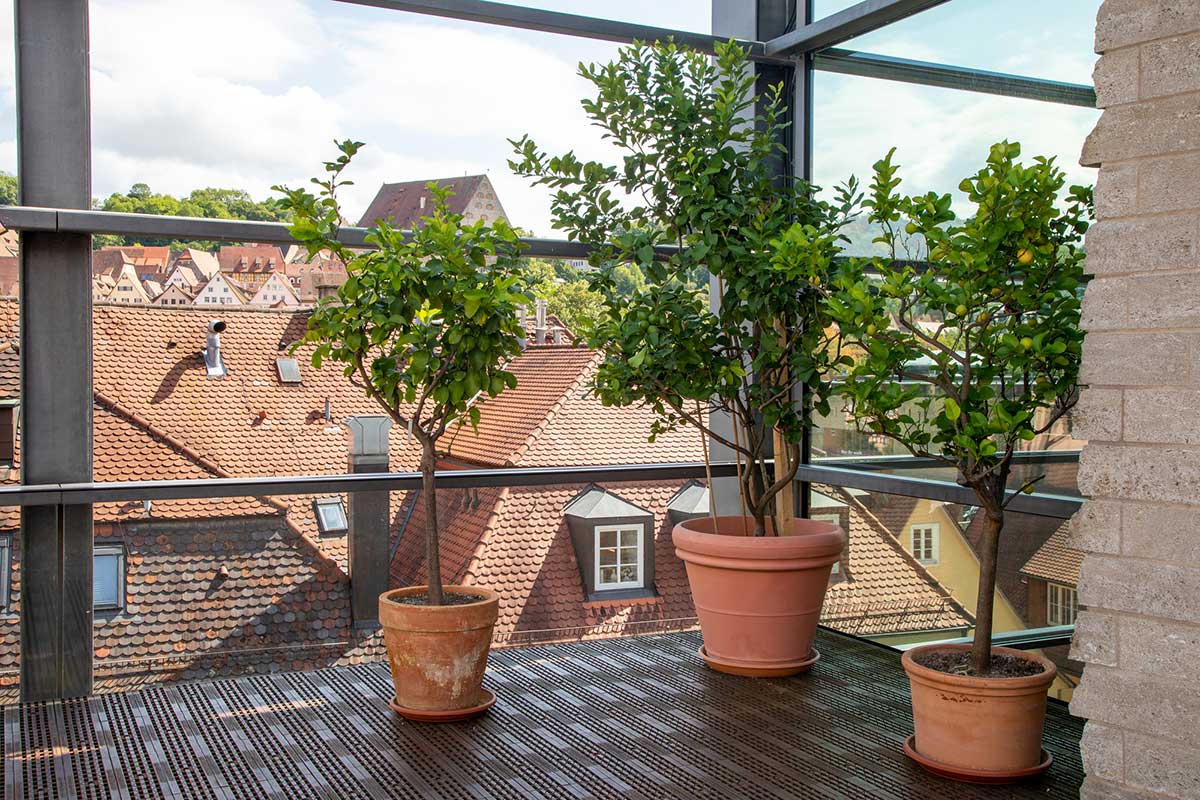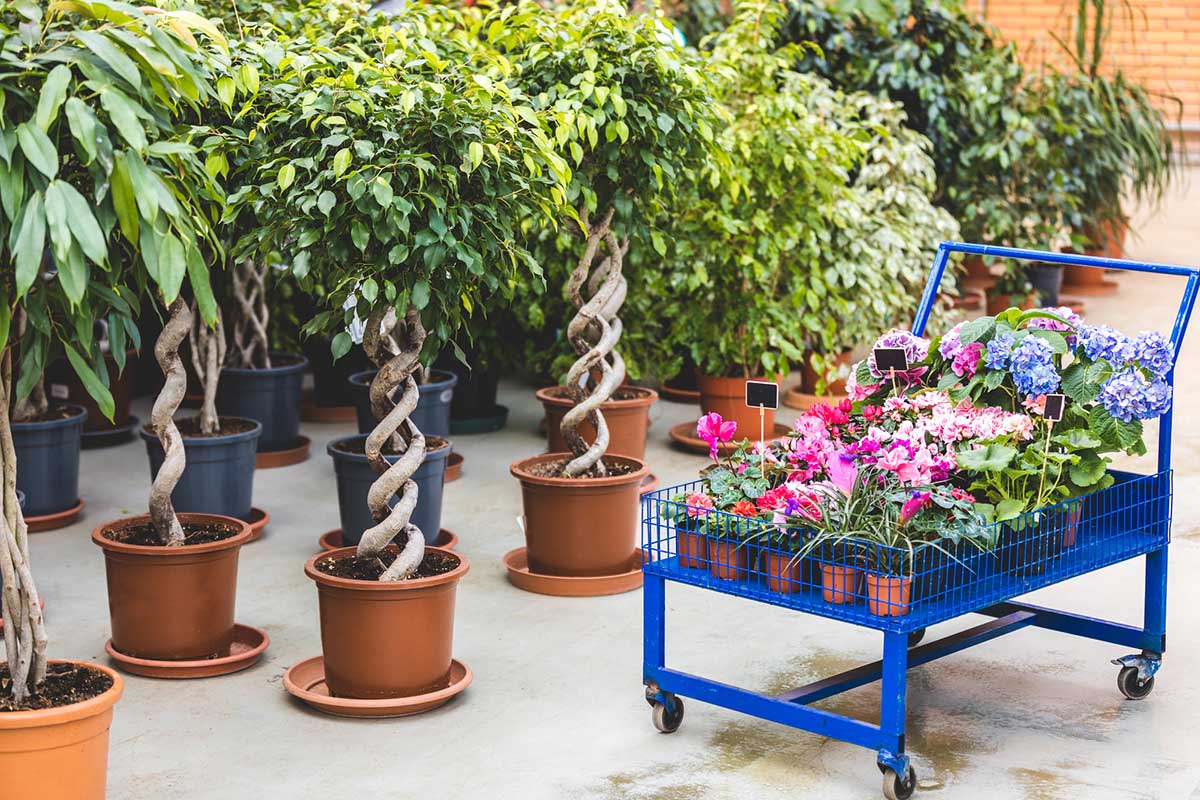A landscape feels complete with shrubs and trees. However, if you have a small yard, limited space, or just a patio garden in a townhouse, it might not be possible to plant large shade trees. This doesn’t mean you can’t enjoy container-grown trees to add beauty and variety to your outdoors.
To extend the life of your container-grown trees, you’ll want to know the answers to questions like what kind of trees do well in pots, what type of container is best, and how long can trees survive in pots?
Read on to learn the truth about growing your trees in pots.
Key takeaways
- A tree’s growth rate and type determine how long it can survive in pots
- You can repot trees into larger pots or prune roots to replant them in the same pot
- Dwarf varieties of trees and some fruit trees do well in pots
How long can trees survive in pots?
The specifics of how long a tree can survive in a pot will depend on the pot size and the tree’s growth rate and type. Typically, trees need repotting every 1 to 3 years. For some species, you can keep them in pots for 20 years or more with the proper care to ensure tree health.
The key is to avoid root-bound where the tree roots get too crowded in the pot. Signs of root-bound trees include dropping leaves and leaves, roots protruding through the drainage holes, and appearing on top of the soil.
You can either repot your tree to a bigger container to allow for the increased growth or prune your tree roots to replant it in the same container. The tree’s size will be limited to the pot size.
Avoid trees that grow 25 or more inches tall annually since the tree roots can struggle to grow in a small area and will need transplanting into the ground sooner. Slow-growing or moderate-height trees are better suited for pots.

How long can trees stay in nursery pots before planting?
Plant pots from nurseries or plant shops are typically intended as a temporary container to hold the trees until they are sold. Trees from a nursery could remain in the container for a few months or up to 6 months if the soil mix has maximum nutrients, aeration, and drainage to support plant growth.
However, take note that depending on how soon the tree was sold, it may have already been in the container for months already. You also want to check the roots to make sure they aren’t crowded. Faster growing trees require repotting into larger containers or the ground sooner.
How do you pick a pot for a tree?
The pot size is crucial to maintaining a potted tree’s health. Too big can lead to root rot and too small can cause root bound issues. You’ll want a pot or planter box at least the root ball’s width and depth.
As the tree grows taller, the tree root ball will also grow. When increasing pot sizes for your tree, do so in smaller increments of 2 to 4 inches, depending on your tree’s growth rate. This reduces the change of fungal and bacterial infections, such as root collar rot.
The pot material also makes a difference. Clay pots are heavier and more stable in windy conditions, especially for tall trees. Terracotta pots offer stability but need to be frost resistant. Plastic pots are lightweight and best for potted trees you will be moving around.

What kind of trees do well in pots?
Hundreds of tree species grow well in containers such as pots or raised planters. For example, dwarf trees can survive longer in pots since they don’t need as much space for their roots. Options for trees growing well in containers include:
- Loblolly pine: one of the fastest-growing pine trees with an average rate of 1 foot per year
- Dwarf Alberta spruce: has dense flurry foliage and a cone growing shape, commonly used as a Christmas tree
- Eastern redbud: for brilliant pink blooms in the early summer and beautiful purple foliage in spring
- Dwarf mugo pine: a slow-growing evergreen conifer reaching 5 feet tall and with short green needles
- Dwarf Japanese maple: add a wow factor with the red leaves and profuse branching of this dwarf variety
- Fruit trees: such as Meyer lemon, dwarf peach, and orange trees for delicious fruits
Can you grow privacy trees in pots?
Yes, you can. If you’re looking for trees for privacy, you’ll want a variety that grows tall with dense, bushy foliage. This helps block the view of your home from passersby and neighbors. The most common potted trees for privacy are:
- Emerald green arborvitae
- Leyland cypress tree
- Flowering dogwood tree
- Thuja green giant
- Golden bamboo
If you want tall trees, you need large pots to provide more space for the roots and prevent it from becoming root-bound. A well-cared potted tree can grow to reach its full height potential.
Conclusion
You can maintain trees in pots for 20 years or more with the proper care. You want to make sure the roots aren’t crowded in the pot by repotting the tree into larger pots every 1 to 3 years or pruning the tree roots to limit their size but keep them in the same container. Choosing trees that are most suitable for pots and the right pot size and material will also help your tree survive longer in pots.
